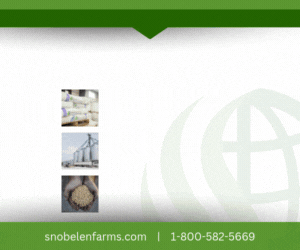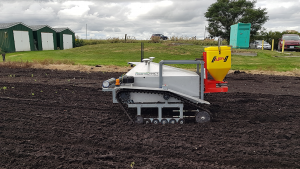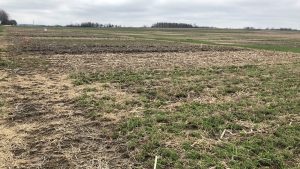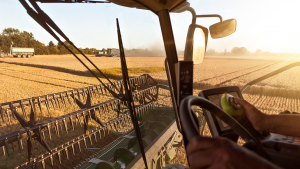Precision planter attachments
ACHIEVING EVEN EMERGENCE
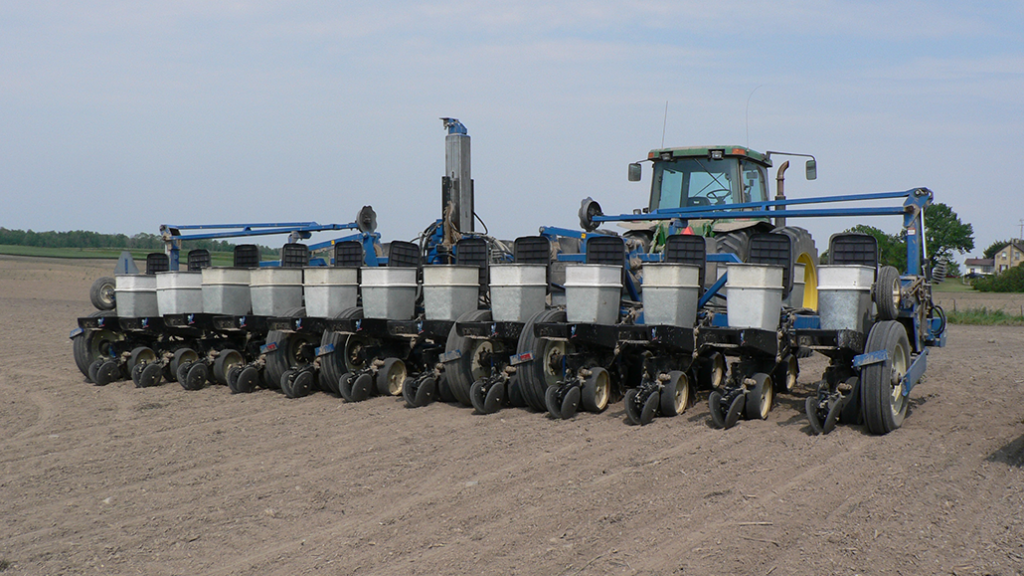
EVEN EMERGENCE — THAT is the goal of precision planters, and each of the add-ons now available are making reaching this goal easier than ever.
It can, however, be intimidating to start investigating which attachments may be worthwhile; and in addition, how to ensure their operation actually delivers the intended benefits.
There are different attachments which sense and address the factors that can impact plant emergence, either positively or negatively. These factors are: seed spacing, row unit operation, downforce, seed depth (in terms of real-time moisture level), fertility, and closing.
Sensors are now available to place on row units to measure seed spacing and singulation. Row cleaners with better stability and ease of depth control move the residue more effectively and can make for a smoother row unit ride, better seed-to-soil contact, and faster planting speeds. Automated downforce control ensures the same weight on the gauge wheels of every row.
Moisture sensors can help farmers become more confident in chosen depth settings — and can also (with more investment) be automated to adjust to operator-chosen parameters of depth range if moisture changes across field conditions. Still other attachments allow for planter-applied fertility, placing combinations of nutrients right in the root zone. Lastly, there are also precision planter attachments that better ensure the correct soil density around the seed and closing of the furrow.
FIRST STEPS
In considering which attachments will benefit you, Jay Curtis in sales at Kearney Planters in Thamesville, stresses that farmers should understand the process will be easier than they think it will be.
“We have many farmers who know the technology will benefit them, but they’re leary of it,” he says. “They really need to know how easy it is to set up and use these attachments.”
Your first step is to call a reputable precision planter company and discuss the problems that you would like to solve.
“The conversation should be an analysis of your individual issues, along with your cropping style, what crops you grow now, and what you may grow in the future,” says Curtis. “That is, it’s important to understand that your platform should be expandable in terms of being able to add more attachments that will be flexible in solving your current issues but also future issues that will arise on your particular farm.”
These are also the thoughts of Nick Zwambag, agronomist and precision specialist at Precision Planting dealership Devolder Farms in Dover Centre. “Take the time and have a conversation about what’s keeping you up at night when you go to the field, what’s not going right, and not only how it’s affecting emergence but what you think is affecting your crop all the way through to yield,” he says. “I think the two biggest things with planting are seed placement in the furrow and downforce management.”
That is, if you already know you have some fields where some downforce pressure is needed and others where little is needed, an attachment for automatic down force is something that will improve your emergence and pay for itself.
“Many farmers may not routinely stop and verify their chosen down force manual setting and they should,” says Curtis. “They would enjoy automated downforce to allow consistency.”
The other concern that farmers most commonly want to talk about, says Zwambag, are closing systems for wetter and tougher conditions which avoid sidewall compaction.
“As farms are getting larger, your closing system may not close for all fields or rows in the same field,” he explains. “There’s a lot of customization that’s possible if you have row-by-row pressure sensing in place. We don’t want to apply pressure where we don’t need it.”
He notes that there are now about 40 different types of wheels that can be put on a closing system and that these can all be mixed and matched. The t-handle for the spring also has four to five settings. Finding the right combinations, says Zwambag, will allow for more planting precision row by row and really, inch by inch. “Everything has to work in harmony.”
Farmers who reduce tillage will want to look at better trash whipping utensils, says Curtis. Still others may want to look at precision technology for applying dry-banded fertilizer, which is being used more and more in Ontario.
Zwambag reports that in trials in 2020 with Precision Planting, Devolder Farms, “all of them confirmed our confidence that applying nitrogen with the planter pass in corn is worthwhile. The average yield difference was 10 bushels per acre. There was also a positive response to nitrogen on soybeans in both our trials. The 20-gallon application provided the biggest yield gain of 8.33 bushels per acre, while 10-gallon application provided the best economic response at $83.12 per acre.”
If there is variability in the soil types of your fields, on-the-go soil moisture sensing can provide huge payback for some farmers. With this attachment, you can make manual adjustments using feedback from your monitor or you can set the system to automatically change planting depth depending on chosen soil moisture parameters.
TWEAKING OVER TIME
Whatever planter attachments you purchase, it is important to deal with a company whom you can rely on for equipment familiarization and later on, for service. Set up for most attachments is straightforward and can be done where you buy or at your farm. However, no precision planter attachment (or any other piece of equipment) negates the need for supervision — the need to get out of the cab and check planter performance.
“You have to use it, build trust in it, and learn how to run it efficiently,” says Curtis. “Any add-on requires management. You still have to get out and tweak the system and fine-tune in every field. But with the right attachments, you can go faster and faster (barring rocks) and still do an incredible planting job and the payback can be fantastic. Having one or more attachments set to the right parameters also means that if you have an employee run the planter, you can feel very confident that you are going to get great results.”
Zwambag echoes these thoughts. “You are going to need to do some tweaking. And keep in mind that as with any technology, it’s only as good as how well you understand the data on the screen.”
Overall, he advises farmers to start with the ‘big’ problems first.
“You don’t want to be overwhelmed, and that’s the beauty of it, that you can master one thing at a time, then add another,” Zwambag explains. “My advice is to master seed spacing and downforce, then look at other things such as closing, planting depth in relation to moisture, and fertility — probably in that order. But again, it definitely depends on each individual farm and the issues causing poor emergence in some areas.” •


